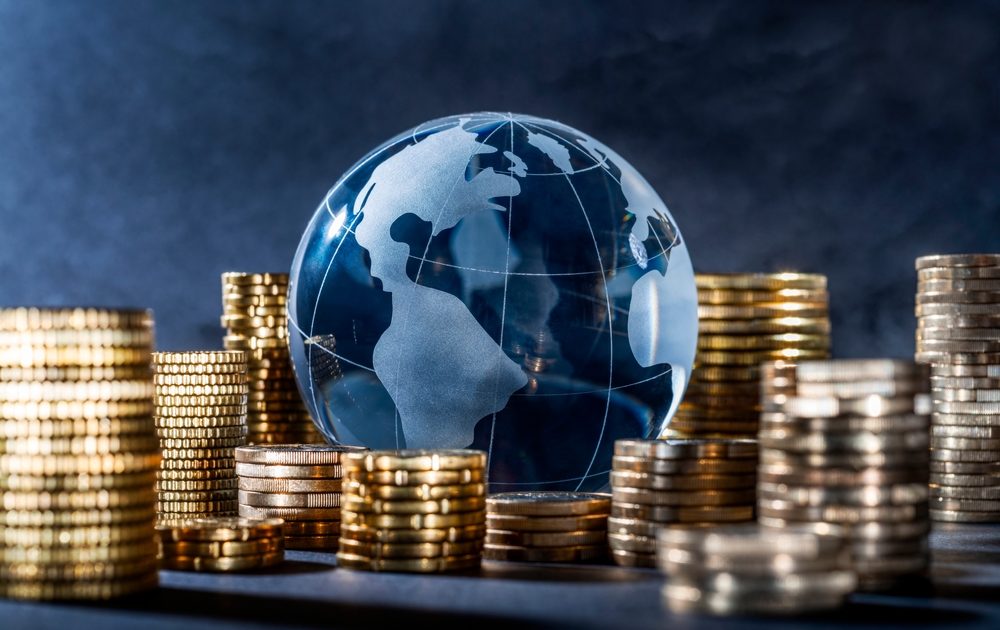- Courses
- GS Full Course 1 Year
- GS Full Course 2 Year
- GS Full Course 3 Year
- GS Full Course Till Selection
- Online Program
- GS Recorded Course
- NCERT (Recorded 500+ Hours)
- Polity Recorded Course
- Geography Recorded Course
- Economy Recorded Course
- AMAC Recorded Course
- Modern India, Post Independence & World History
- Environment Recoded Course
- Governance Recoded Course
- Science & Tech. Recoded Course
- International Relations and Internal Security Recorded Course
- Disaster Management Module Course
- Ethics Recoded Course
- Essay Recoded Course
- Current Affairs Recoded Course
- CSAT
- 5 LAYERED ARJUNA Mentorship
- Public Administration Optional
- ABOUT US
- OUR TOPPERS
- TEST SERIES
- FREE STUDY MATERIAL
- VIDEOS
- CONTACT US
PLACES IN NEWS 26th DECEMBER 2024
PLACES IN NEWS 26th DECEMBER 2024
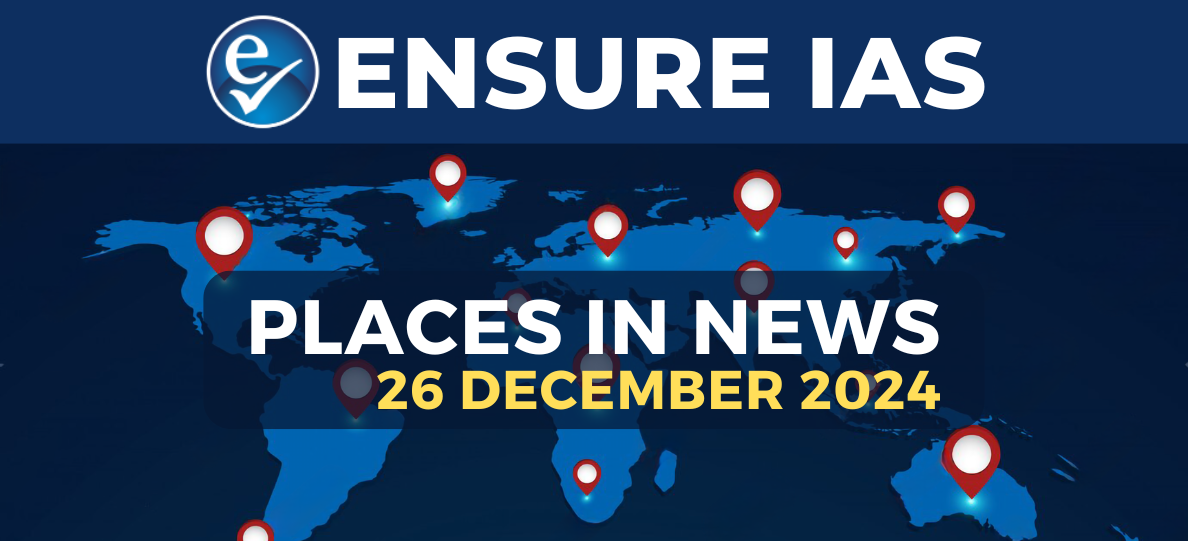
Greenland
Why in news?
- In a surprising move, US President-elect Donald Trump has reiterated his interest in purchasing Greenland, the world's largest island, governed by Denmark.
- Trump's proposal, first floated in 2019, has sparked global attention and controversy.
About Greenland:
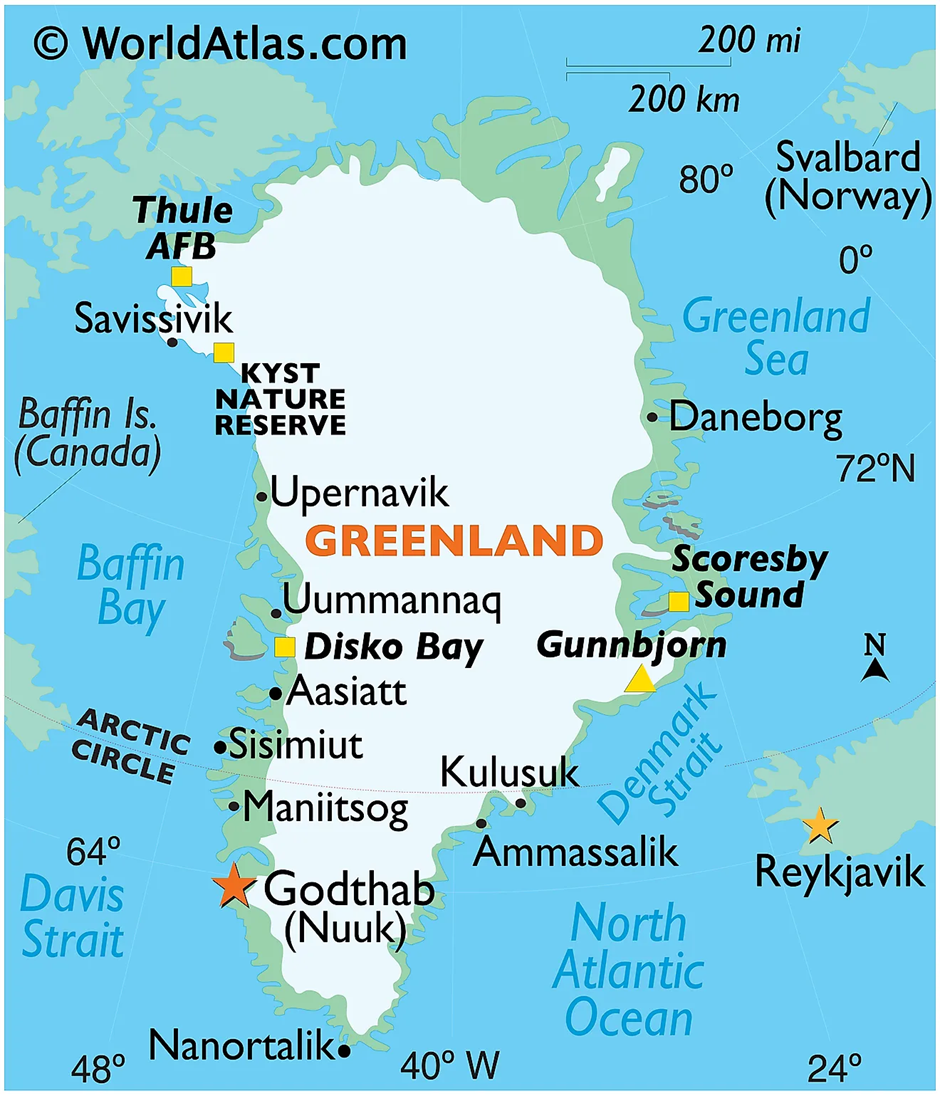
- Geography:
- Greenland, the world’s largest island, lies in the North Atlantic Ocean and extends into the Arctic Ocean.
- With an area of approximately 2.16 million square kilometres, about 80% of its surface is covered by an ice sheet, making it a critical component of global climate systems. The island is characterised by its rugged terrain, glaciers, and fjords, with only a small coastal strip suitable for habitation.
- Greenland's strategic location between North America and Europe, along with its proximity to the Arctic Ocean, enhances its geopolitical significance.
- The Arctic holds vast untapped reserves of natural resources, including oil, gas, and rare earth minerals, making Greenland a focal point for resource exploration.
- Additionally, as climate change accelerates ice melting, new shipping routes like the Northwest Passage are becoming navigable, positioning Greenland as a potential hub for Arctic trade routes.
- Geopolitical importance:
- Greenland's location near the Arctic Ocean gives it prominence in the region's geopolitical dynamics.
- The Arctic is increasingly contested due to its resources and strategic value, drawing interest from major powers like the United States, Russia, and China.
- Greenland plays a crucial role in international discussions on Arctic governance, environmental conservation, and indigenous rights.
- Its proximity to NATO's Arctic defence operations, particularly the US-operated Thule Air Base, underscores its significance in military strategy and security.
- Political status:
- Politically, Greenland is an autonomous territory within the Kingdom of Denmark.
- While it gained self-rule in 2009, Denmark retains control over foreign affairs, defence, and monetary policy.
- Greenland's government handles domestic matters, including natural resource management and education.
- There is an ongoing debate about achieving full independence, fuelled by Greenland's resource wealth and cultural identity. However, economic reliance on Danish subsidies poses a significant challenge to this aspiration.
- Greenland's strategic and resource-rich location ensures its role as a key player in Arctic politics and global climate discussions. As climate change reshapes the Arctic, Greenland's importance in international affairs is expected to grow further, with its governance and resources at the centre of regional and global attention. Its geographical and political status make it a unique intersection of environmental, economic, and strategic interests.
Tartus and Lattakia
Why in news?
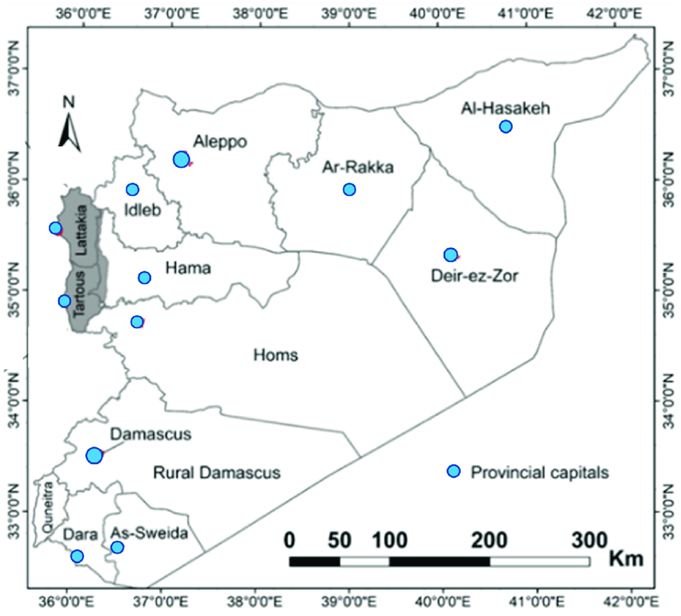
- Clashes erupted in Tartus’s Kherbat Al-Ma’azzah village between armed residents and General Security forces after residents resisted home searches, resulting in casualties on both sides.
- A General Security vehicle was set ablaze, prompting the Military Operations Administration to deploy reinforcements and special units.
- Meanwhile, in Lattakia’s Al-Mazir’a area, violent clashes occurred between former regime supporters and Al-Sham Legion members, leaving 15 casualties, including four deaths.
About Syrian civil crisis:
- Syria is located in the heart of the Middle East, sharing borders with Turkey to the north, Iraq to the east, Jordan to the south, and Lebanon and Israel to the west.
- Syria remains embroiled in ongoing civil clashes that began in 2011 with the uprising against Bashar al-Assad's regime. These conflicts have evolved into a multifaceted civil war involving government forces, opposition groups, extremist factions, and foreign powers.
- Regions Affected:
- Northwest Syria: Idlib and parts of Aleppo are hotspots, where opposition forces and Hay’at Tahrir al-Sham (HTS) continue to clash with government troops. These areas have also witnessed airstrikes and bombings.
- Northeast Syria: The Kurdish-led Syrian Democratic Forces (SDF), supported by the US, face intermittent attacks from Turkish-backed forces, particularly around areas like Ras al-Ayn and Tal Abyad.
- Southern Syria: Daraa province, the birthplace of the Syrian uprising, experiences sporadic violence as tensions persist between former rebel factions and government forces.
- Central and Eastern Syria: The desert regions witness frequent clashes between government forces and remnants of ISIS, which continues to carry out insurgent attacks.
- Coastal Areas: Recent clashes, such as those in Lattakia and Tartus, highlight rising tensions among local factions, regime supporters, and armed groups.
- Impact and Complexity:
- The civil clashes reflect Syria’s fragmented control, with different factions holding sway over various regions.
- The involvement of international players, including Russia, Iran, Turkey, and the US, further complicates the situation.
- Regions like Idlib and north-eastern Syria remain humanitarian crisis zones, with millions displaced and reliant on aid.
- Syria’s geography and the diverse interests of factions make it a focal point for prolonged conflict and regional instability
Kilauea Volcano
Why in news?
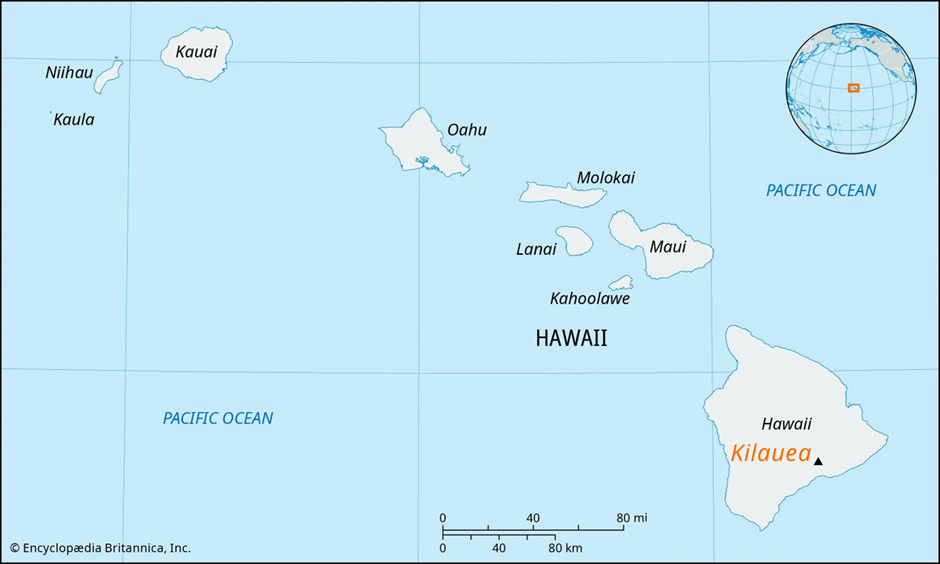
- Hawaii’s Kilauea Volcano, one of the world’s most active volcanoes, has erupted again, displaying fountains of lava and glowing flows at its summit crater.
About Kilauea Volcano:
- Geography
- Kilauea is located on the Big Island of Hawaii and is one of the five volcanoes that form the island.
- It lies within Hawaii Volcanoes National Park and rises approximately 1,247 meters above sea level.
- Its summit features a large caldera, Halemaʻumaʻu Crater, which serves as the focal point for many eruptions. Kilauea is a shield volcano, characterised by its broad, gently sloping profile formed by the fluid flow of basaltic lava.
- Volcanic Activity:
- Kilauea is among the most active volcanoes on Earth, with nearly continuous eruptions recorded from 1983 to 2018.
- Its eruptions are typically nonexplosive, producing large lava flows that can extend for miles, reshaping the island's landscape.
- The volcano is part of the Hawaiian-Emperor seamount chain, which represents a hot spot of volcanic activity beneath the Pacific Plate.
- Significant Past Eruptions:
- In 2018, Kilauea experienced one of its most destructive eruptions in recent history. Lava flows destroyed over 700 homes, displaced thousands of residents, and added nearly 875 acres of new land to the island. The eruption caused a partial collapse of the summit caldera and resulted in significant changes to the volcano's structure.
- Historical records show major eruptions in 1790, which claimed numerous lives in an explosive event, and in 1955, when extensive lava flows impacted residential areas.
- Kilauea’s long-term activity over centuries has been integral in forming much of the Big Island’s southern region.
- Reason for Occurrence:
- Kilauea's activity is driven by the Hawaiian hot spot, a stationary plume of magma rising from deep within the Earth’s mantle.
- As the Pacific Plate slowly moves northwest over this hot spot, magma erupts through the lithosphere, forming and sustaining volcanoes like Kilauea. This process has created the Hawaiian island chain over millions of years.
- Cultural Importance:
- Native Hawaiians regard Kilauea as sacred, associating it with Pele, the goddess of fire and volcanoes.
- Its eruptions are seen as manifestations of her power, deeply embedded in Hawaiian traditions and mythology.
Ken – Betwa river linking Project
Why in news?
Prime Minister Narendra Modi laid the foundation for the ₹45,000 crore Ken-Betwa river-linking project in Khajuraho, aimed at addressing Bundelkhand’s water crisis and benefiting 10 districts in Madhya Pradesh and Uttar Pradesh.
About Ken and Betwa river:
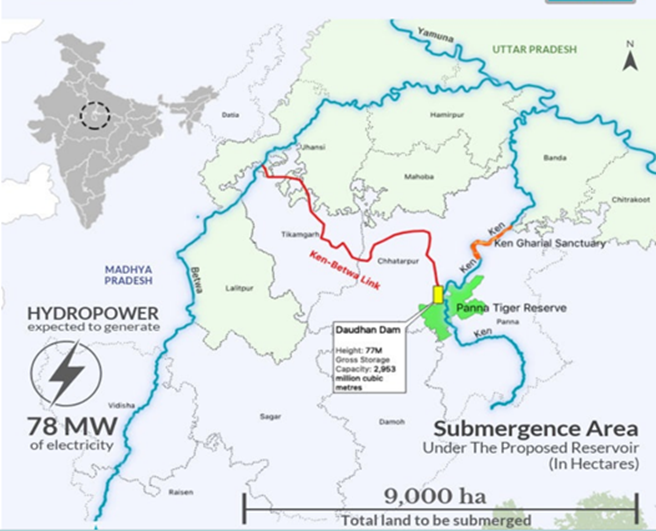
- The Ken River, originating in Madhya Pradesh’s Kaimur hills, flows through the Panna district before merging with the Yamuna River in Uttar Pradesh. Known for its pristine waters and biodiversity, it supports the Panna Tiger Reserve, a critical wildlife habitat.
- The Betwa River rises in Madhya Pradesh's Vindhya range and flows through the states of Madhya Pradesh and Uttar Pradesh, joining the Yamuna River near Hamirpur. It plays a significant role in irrigation and sustenance for local communities in the Bundelkhand region.
About Ken-Betwa river-linking project:
- The Ken-Betwa River-Linking Project proposes to transfer surplus water from the Ken River to the Betwa River through a 221-km canal system, including tunnels and dams. This interlinking seeks to balance the water availability between the two rivers to address acute water scarcity.
- The project holds immense importance for the Bundelkhand region, known for its arid conditions and frequent droughts. It will irrigate over 11 lakh hectares of farmland, ensuring better agricultural productivity, and provide drinking water to around 62 lakh people.
- It aims to generate 100 MW of hydropower and 27 MW of solar energy, supporting renewable energy goals. The water supply will also benefit urban and industrial sectors, boosting regional development.
- Geographically, the project spans northern Madhya Pradesh and southern Uttar Pradesh, covering hilly terrains and drought-prone areas. It integrates parts of the Vindhyan plateau and Bundelkhand plateau, emphasising the need for sustainable water management in these regions.
Ecological concerns associated:
- Potential ecological challenges arise from the project's impact on the Panna Tiger Reserve, where parts of the core area may face submergence. Over 23 lakh trees are likely to be felled, threatening habitats of species like tigers and vultures.
- Biodiversity loss, including disruption to riverine ecosystems, could occur as natural habitats are fragmented. Increased human activity during construction may further stress the fragile environment.
- The project raises concerns about water balance assumptions, as experts question whether the Ken River has sufficient surplus water to support this transfer without affecting its ecosystem.
- Alternative approaches, such as upstream dam locations, have been suggested to minimise ecological damage. However, implementing these requires careful planning and balancing developmental goals with environmental conservation.
- While the project promises to alleviate water challenges in Bundelkhand and enhance livelihoods, addressing its environmental implications is critical to ensuring sustainable and equitable outcomes for the region.
Omkareshwar Floating Solar Project
Why in news?
On Atal Bihari Vajpayee’s 100th birth anniversary, PM Narendra Modi visited Madhya Pradesh to inaugurate the Omkareshwar Floating Solar Project in Khandwa, contributing to green energy and water conservation, aligning with India’s 2070 net-zero goal.
About Omkareshwar Floating Solar Project:

- The Omkareshwar Floating Solar Project is located on the Narmada River in the Khandwa district of Madhya Pradesh. The reservoir formed by the Omkareshwar Dam serves as the site for this solar energy initiative, utilising its vast water surface area effectively.
- The Project in Madhya Pradesh has a planned capacity of 600 MW.
- The project leverages floating photovoltaic technology, where solar panels are mounted on floating platforms, reducing land use and enabling efficient energy generation without occupying agricultural or urban land.
- Floating solar panels help reduce water evaporation, conserving significant amounts of water annually. This feature is particularly important in water-scarce regions.
- The project contributes to reducing carbon emissions and aligns with India’s commitment to achieving net-zero carbon emissions by 2070. It also strengthens the renewable energy capacity of the country.
About Omkareshwar:
- Omkareshwar holds significant cultural and religious importance as one of the 12 Jyotirlingas, revered by Hindus. The Omkareshwar Temple, located in Mandhata hills of Madhya Pradesh, attracts pilgrims from across India. The island's natural shape resembles the Hindu sacred symbol 'Om,' adding to its spiritual aura.
- The Narmada River, flowing near the site, is considered sacred, with numerous rituals and festivals held along its banks. Omkareshwar is also a hub for traditional and folk music, showcasing the rich cultural heritage of the region.
Key Solar Projects in India
|
Solar Project |
Location |
Key Features |
|
Bhadla Solar Park |
Rajasthan |
World’s largest solar park, spans over 14,000 acres, capacity of 2,245 MW. |
|
Pavagada Solar Park |
Karnataka |
Spread across 13,000 acres, generates 2,050 MW, located in semi-arid regions. |
|
Rewa Solar Power Project |
Madhya Pradesh |
Capacity of 750 MW, among India’s first grid-parity projects, powers Delhi Metro. |
|
Charanka Solar Park |
Gujarat |
India’s first solar park, generates 600 MW, fosters energy-efficient practices. |
|
Floating Solar Project, NTPC |
Ramagundam, Telangana |
India's largest floating solar plant; located on the NTPC reservoir; supports local power needs. |
|
Kamuthi Solar Power Project |
Tamil Nadu |
Largest single-location solar plant in the world; automated cleaning systems for high efficiency. |
|
Kurnool Ultra Mega Solar Park |
Andhra Pradesh |
Provides power to the state grid; addresses local electricity shortages. |
UPSC CSE PYQQ1. Consider the following statements:
Which of the statements given above is/are correct? (2022)
Answer: Option B Q2. Consider the following pairs:
Whicz of the above is/are correctly matched? (2015)
Answer: Option A |
|
Also Read |
|



